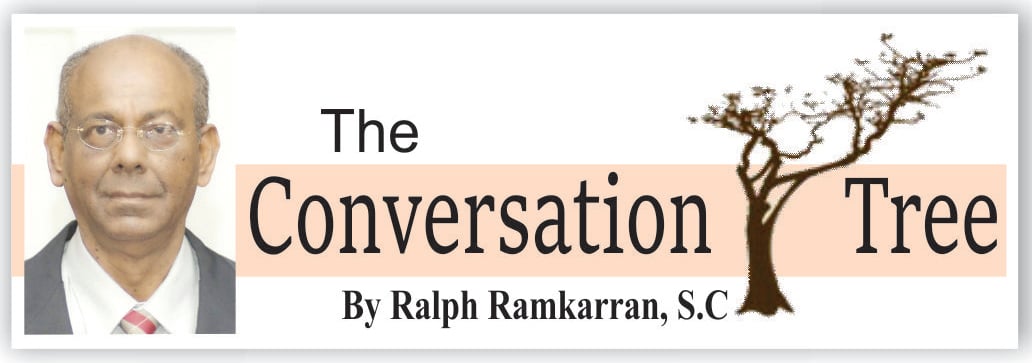It can hardly be denied that the public servants, including teachers, deserve to be paid more. It can also be hardly denied that public servants, including teachers, have come a long way since the collapse of the Guyana economy during the 1970s. Long before 1980 Guyana’s economy had been consistently in decline, exacerbated by the rise in oil prices and the decline in the price of sugar on the world market in the 1970s. The decline continued unaddressed until Burnham passed and Hoyte became President in 1985. Hoyte immediately negotiated a recovery programme with the IMF, which Burnham had refused to do on the ground of the harsh conditionalities. Among those accepted were devaluation and a wage and salary freeze. Between 1987 and 1991 the Guyana dollar was devalued from $19.50 to $101.75 for US$1. As a result of these harsh measures, middle level public servants, who owned their own homes and cars, joined the ranks of the impoverished. The poor descended into extreme poverty. While public servants, including teachers, have substantially recovered from that era, the overhang of debilitating IMF conditionalities still remain.
When the PPP entered government in 1992, three tendencies emerged. Its strong commitment to labour was the first; the continuing IMF programme limiting increases in salaries was the second; and a new-found militancy by that section of the trade union movement supportive of the PNC, dormant during the worst years of the dictatorship, took shape and became the third.
On the one hand, transformative labour legislation advancing the rights and interests of employees took place. These included the Trade Union Recognition Act, which harboured a turbulent pre-Independence history, and the Termination of Employment and Severance Pay Act, long struggled for by the PPP. On the other hand, the new militancy gave birth to the Public Service Union (PSU) strike of 1999 on a demand for a 40 percent increase in salaries for 1999 and 50 percent increase for 2000. The Government offered 4.6 percent, constrained by IMF conditionalities.
The strike lasted for 57 days and the arbitration tribunal appointed by the Government shockingly awarded the sum of 31.6 percent for 1999 and 26.6 percent for 2000. This single act killed collective bargaining in Guyana. It ushered in an era of conflict between PPP/C governments and pro-PNC/APNU unions. The Government withdrew agency shop arrangements with the PSU, whereby it had deducted union dues from the salaries of public servants and paid it to the PSU. The PSU has since lost billions of dollars and has become a shadow of its former self. With the recently announced withdrawal of the Government from the agreement with the Guyana Teachers’ Union (GTU) to deduct union dues from teachers’ salaries, and pay it over to the GTU, the union is destined to follow the path of the PSU.
The PPP, like a large number of political parties in the Caribbean Region, has its roots in the labour movement. The inspiration for the formation of the PPP was the strike of sugar workers at Enmore in 1948. Its close alliance and partiality to the trade union movement, despite the hostility of a large section which was always pro-PNC, began to wane with the passing of Cheddi Jagan in 1997 and the PSU strike of 1999, which severely damaged the Presidency of Janet Jagan, and reminiscent of the PSU strike in 1963 which helped to bring down the PPP Government in 1964. The PPP’s decreasing enthusiasm was also generated by the new trade union militancy being seen as politically motivated. The PPP felt that it was not being given due understanding and appreciation for its efforts to upgrade pay, conditions and rights, while an IMF programme was still in force. This loss of enthusiasm has also been taking place at a time when the membership and influence of a divided trade union movement are in marked decline. It is within this context that the GTU strike is taking place.
The strike also comes at the wrong time to be successful – after the 6.5 percent pay increase was announced for public servants late last year. This amount cannot be increased for teachers without creating severe imbalances in pay in the public service. An increase for teachers must mean an increase for all other public servants which the Government will not concede. Militant action could only have had potential if it had taken place before the increases were announced by the Government. A fight to the death would not have been necessary. It would have been enough if the GTU and other unions had expressed their views in as vigorous a way as they considered necessary to get the Government’s attention.
In Guyana the relationship between trade unionism and politics has long been close, driven by ideological considerations. With the weakening of the ideological compulsion for political parties to sustain the support of the trade union movement, and the continuing militancy of the trade union movement, and its direct involvement in Opposition politics, and politics in general, it is inevitable that the strike will appear to be political, as it has been deemed by the Government. The GTU of 2024 does not have the clout of the PSU of 1999. A wise conclusion would be agreed terms of resumption and an agreement to engage in negotiations.
(This column is reproduced with permission from Ralph Ramkarran’s blog, www.conversationstree.gy)










